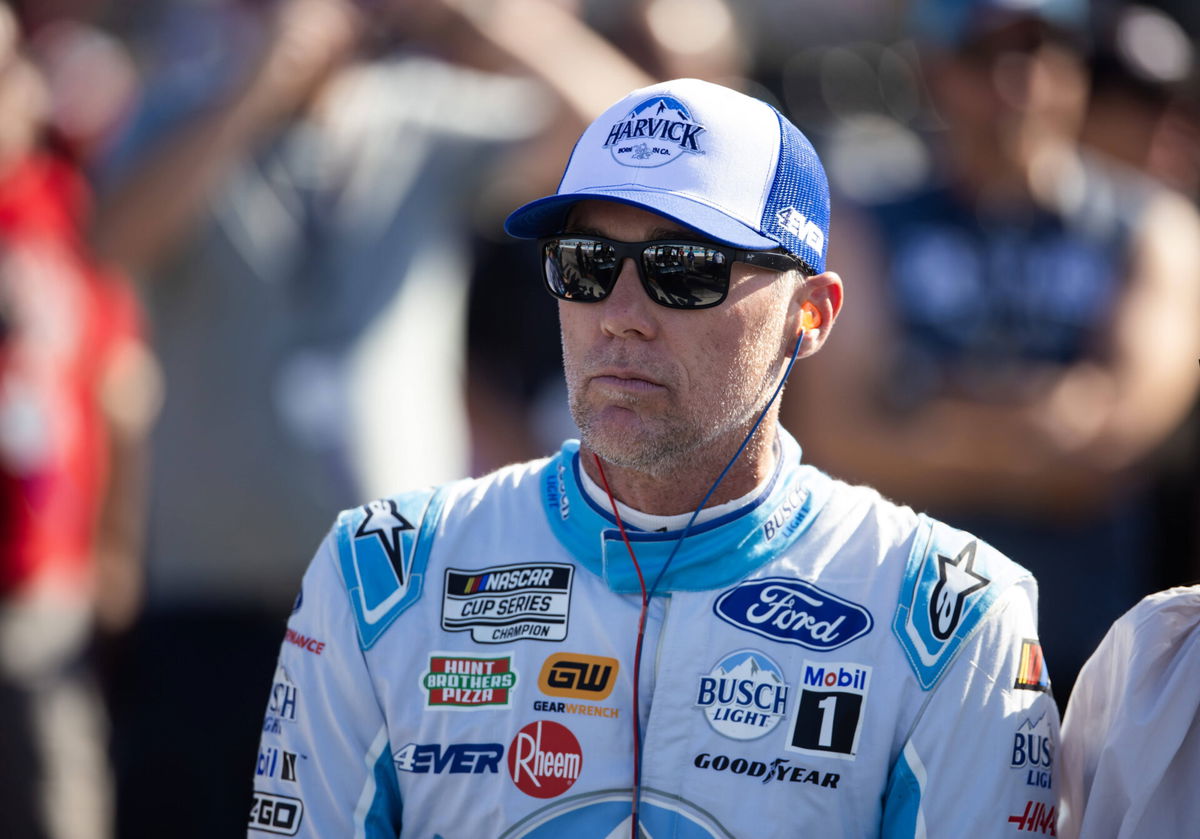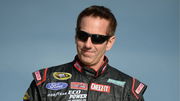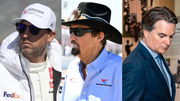
Imago
NASCAR, Motorsport, USA Cup Series Championship Qualifying Nov 4, 2023 Avondale, Arizona, USA NASCAR Cup Series driver Kevin Harvick during qualifying for the NASCAR Championship Race at Phoenix Raceway. Avondale Phoenix Raceway Arizona USA, EDITORIAL USE ONLY PUBLICATIONxINxGERxSUIxAUTxONLY Copyright: xMarkxJ.xRebilasx 20231104_mjr_su5_006

Imago
NASCAR, Motorsport, USA Cup Series Championship Qualifying Nov 4, 2023 Avondale, Arizona, USA NASCAR Cup Series driver Kevin Harvick during qualifying for the NASCAR Championship Race at Phoenix Raceway. Avondale Phoenix Raceway Arizona USA, EDITORIAL USE ONLY PUBLICATIONxINxGERxSUIxAUTxONLY Copyright: xMarkxJ.xRebilasx 20231104_mjr_su5_006
NASCAR’s gone high-tech, but not everyone’s thrilled about it. The Next-Gen era, with its spec cars and real-time SMT data, has turned racing into something closer to a video game than the raw, seat-of-the-pants battles of old.
Watch What’s Trending Now!
Take the 2023 Southern 500 at Darlington. Ross Chastain found a killer wide line into Turn 3, but within a stage, Tyler Reddick and Christopher Bell were copying it, thanks to SMT data feeding teams’ simulators. At the 2022 Coca-Cola 600, Austin Cindric’s engineer told him to mimic Chase Elliott’s throttle trace into Turn 1, and Cindric later admitted he barely understood what his car was doing. He just trusted the data.
Short tracks like Martinsville and Richmond, once hotbeds for gritty racing, have suffered most. The 2023 Martinsville spring race saw just two green-flag passes for the lead, with everyone running identical lines and lap times, courtesy of spec parts and data-driven setups. Kevin Harvick, never one to bite his tongue, is fed up with this tech overload and let loose on his podcast, calling out how it’s flattening NASCAR’s soul.
ADVERTISEMENT
Harvick lays bare what makes today’s races monotonous
On the latest episode of Kevin Harvick’s Happy Hour, co-host Mamba Smith kicked things off, noting how drivers used to be the main data point, explaining their car’s feel to guide setups.
Harvick quickly jumped in saying, “You have to be willing to be critiqued all the time because the data is live. Because the data is live, they know what you’re doing. If they’re telling you that you’re using too much brake, you’re using too much brake. And you know you can have a reason, but they can tell you why you’re going slower. I don’t necessarily like that. I almost think that they should take some of that away during the race. I think it’s great to look at all that.”
ADVERTISEMENT
The veteran’s gripe is with real-time telemetry, which tracks brake pressure, throttle, and steering angle, letting engineers micromanage drivers mid-race. Unlike the days of Dale Earnhardt Sr. or Tony Stewart, when feel drove decisions, today’s teams see everything instantly. If a driver’s braking too hard, like Cindric at the Coca-Cola 600, they’re coached on the spot, stripping away the instinct that defined racing’s past.
Kevin Harvick kept it real, “I think it’s great for the fans to see it, but it’s really difficult to try to figure out how to take it away when the fans can see it and everybody else can see it. But I think it is definitely a hurt. You know the advantage because it just makes everybody be able to be equal. And I hate it as a driver, the weekend, and be able to say I’m better at doing this because I’m just better than you. And figure, or if you figure something out, then everybody figures it out.”
ADVERTISEMENT
The Next-Gen car’s spec chassis and SMT data, shared across teams and shown on TV, kill any edge a driver might find. Chastain’s Darlington line was copied in a stage because everyone saw his data. In the past, drivers like Jimmie Johnson could own a track for a weekend with a unique approach. Now, innovation gets replicated instantly. That leaves races like Martinsville’s 2023 snoozefest, where identical setups led to just two lead passes.
He didn’t stop there, saying “So if somebody goes up in the top and Kyle Larson is two inches from the wall and how he’s using the throttle. Next thing you know Tyler Reddick’s doing the same thing. They’re all up in the same groove. I’ve heard Clint gripe about the data for two years now and he’s right. I mean it just makes everything so damn close that you can’t find an advantage to beat your competitor during your race because all those guys just figure it out immediately.”
Harvick’s pointing to Larson’s rim-riding mastery, a high-risk move that used to set him apart at tracks like Homestead. Now, Reddick and others can mimic it by studying Larson’s throttle traces in real time. Clint Bowyer’s been vocal about this too, lamenting how data erases the secrecy that once let drivers like him carve out an edge. When everyone’s running the same groove, races turn into follow-the-leader. Harvick’s frustration is that the tech makes NASCAR feel less human.
ADVERTISEMENT
Top Stories
Greg Biffle Plane Tragedy: What Might Have Caused the Crash That Killed the NASCAR Champ and His Family

“The Biff”: NASCAR Fans Push for Legacy-Defining Award Named After Greg Biffle Following His Tragic Death

NASCAR Veteran Pays Heartfelt Tribute to ‘Family’ Who Passed Away With Greg Biffle in Tragic Crash

Who Is Greg Biffle’s Wife? Everything You Need to Know About Cristina Grossu

Grief Ripples Through NASCAR Garage as Richard Petty, Jeff Gordon, and Denny Hamlin Pay Tributes to Greg Biffle

Kevin Harvick slams Next-Gen car’s shortcomings
Harvick’s not just mad about data. He’s got beef with the Next-Gen car itself, especially after the Iowa Corn 350 on August 3. The Cup Series got embarrassed when 17-year-old Brent Crews in the ARCA Menards Series outqualified Chase Briscoe’s Cup pole time. 22.901 seconds to 23.004 seconds.
Come race day, William Byron won from second, but dirty air and low top-end speed made passing nearly impossible. Harvick didn’t sugarcoat it on his podcast, “The car sucks. It’s not fun to see the car not be able to pass like it needs to be. And it turned into a fuel mileage track position race. That part, I don’t like. It doesn’t seem like we’re making any ground on making it better.” The Next-Gen car’s short-track package, rolled out in 2022, has been a sore spot. Its lack of power turns races like Iowa into stale, position-holding affairs.
ADVERTISEMENT
He gave props where due but stayed firm, “I think that Goodyear has done a good job in making the tires a little bit better, but definitely need—it wound up being exciting because it was edgy. Cars were hard to drive. The track is rough. The track’s got everything that it needs, but man, it’s tough to watch a fuel mileage race on a short track.” Harvick’s point is that Iowa’s bumps and character should’ve made for a banger. But the car’s sluggishness, exacerbated by low horsepower, killed the action.
He pushed for a fix too, saying, “The Cup cars need to go way faster, especially at the short tracks. And I don’t think there was anything more evident than this weekend. The ARCA car outqualified the Cup car, and it was extremely difficult to pass. The slower you go, the harder it’s going to be to pass. The faster the mid-corner speed is.” He even suggested more horsepower, arguing that short tracks and road courses could handle it. “In the end, the cars are so damn slow they don’t race good,” Harvick said, summing up why Iowa felt like a missed opportunity for NASCAR’s premier series.
ADVERTISEMENT
ADVERTISEMENT
ADVERTISEMENT
ADVERTISEMENT

